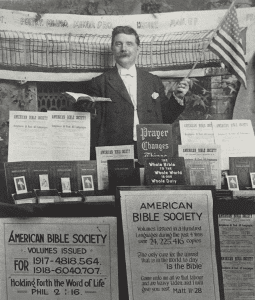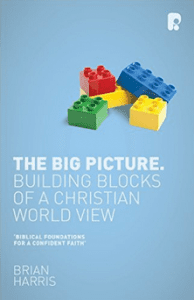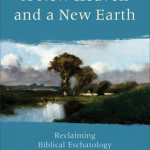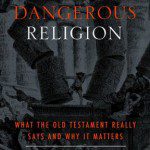 To dig a little deeper into the problem of animal suffering Ronald Osborn (Death Before the Fall) turns to C. S. Lewis and The Problem of Pain. There are two ideas that are offered up for consideration.
To dig a little deeper into the problem of animal suffering Ronald Osborn (Death Before the Fall) turns to C. S. Lewis and The Problem of Pain. There are two ideas that are offered up for consideration.
All Death is not Evil. According to Osborn, Lewis makes a distinction between sentience and consciousness. Sentience is the ability to perceive experiences subjectively while consciousness includes sentience with a greater sense of selfhood and the ability to connect the experiences into a larger picture. Lower animals may be sentient but they are not (in Lewis’s definition) conscious.This makes a difference.
We tend to anthropomorphize the discussion of nature using terms such as “cruel” or “vicious” or “selfish” to describe predation as well as the broader cycle of life and death at work in evolutionary processes. But there is something of a fallacy here. Osborn poses the question:
When an eagle catches a salmon out of a river to feed its young, is it correct to describe the event as “vicious,” “evil” and “selfish”? Or is it we who have invented not only the suffering of the fish by the pathetic fallacy, but also the “cruelty” of the eagle through the fallacy of reading into all forms of predation a kind of moral egoism for which there is no real evidence either? (p. 141)
To put this in perspective he continues parenthetically:
It might seem a very strange thing to say, but one cannot help but recall here that Christ, without being a “vicious” or “selfish” predator, not only ate fish but also delivered to his disciples a superabundant harvest of fish as a miraculous sign of his inbreaking kingdom. God in human form was sinless and he was also an omnivore. (p. 141)
Jesus not only consumed fish, but supplied an abundance of fish for sale and consumption as a sign of his kingdom. There is no indication of any “evil” attached to this event, or any mysterious symbolism in the death of the fish. They are not sacrificed. It is just natural in God’s creation for people to eat fish and a superabundance of fish symbolizes a superabundance of blessing.
Having made this point, however, Osborn doesn’t find Lewis’s distinction between sentience and consciousness particularly useful. There is increasing evidence for a range of animal experience that includes elements that we see as characterizing consciousness. This is especially true in the higher mammals and especially in primates. It is simply unwise to make too much of this distinction.
A midrash on cosmic conflict. Osborn finds some of Lewis’s other ideas more useful in addressing the problem of death before the fall. Lewis advocates a “faithful agnosticism” as there are some things we simply don’t understand fully and offers a cosmic conflict theodicy that Osborn likens to a midrash.
We tend to lose sight of the fact that evil in the biblical narrative predates both humanity and the Fall. There is a personified evil present in the biblical narrative from Genesis 3 on, although here Osborn follows N.T. Wright in that it would be wrong to see this evil as personal as we see Jesus or humans as personal. The ha-satan should be viewed as sub-personal or quasi-personal. Nonetheless, the serpent was in the garden. The idea to disobey did not originate with Eve, but from the serpent.
One consequence of evil predating human existence or the Fall is that we might see the mission of Adam in the garden as something more than gardening. He was given a task to guard, keep, or protect the Garden … perhaps against perils present in the outside world. Humans enter into the stage of a drama that was already underway. Osborn looks at some passages in Revelation that might lean this way and then continues:
Such a reading would clearly give new meaning to the apostle Paul’s insistence that Christ is the second Adam, the one creation waits eagerly for, the long-foretold redeemer who will at last “set free from its slavery to corruption” the “whole creation,” which “groans and suffers the pains of childbirth until now,” the “firstborn of all creation” whole euangelion must be proclaimed “in all creation under heaven” (Rom 8:19-22; Col 1:15, 23 NASB). (p. 145)
According to the book of Revelation, Christ is the “beginning of the creation of God” and the lamb “slain from the foundation of the world” (Rev 3:14, 13:8).
…
Humans as well as natural history now appears as the stage for a drama that has involved opposing freedom and sovereignty for vastly longer than we may first have imagined. This drama still awaits its final act, which promises nothing less than a great transformation of all creaturely existence as the material and temporal is at last delivered from its captivity to the “principalities” and “powers” and it caught up in God’s eternity. (p. 146)
Humans as creatures failed and continue to fail. The fall is real. But the cosmic conflict is not of our making and animal predation, death and suffering are not a consequence of the fall.
There are a number of significant aspects to the cosmic conflict theodicy offered by Lewis and Osborn (culled from a few different places in the chapter).
- There is a humble recognition that there is much that we simply do not know. We don’t have all the answers in science, or in our interpretation of scripture. An honest humility will serve us well and relieve us from the “oppressive burden of knowing.” There are not nice neat answers for every question.
- The description of creation emphasizes competing freedoms rather than divine design or decree to account for features of “natural evil” that we see in the world today. Osborn finds that this offers moral and theological coherence he doesn’t see in other explanations for predation and “natural” evil.
- It is agnostic on the historicity of Adam. In this narrative Adam and Eve could be a couple, a people, a representative, or a “myth” to tell the story. We must wrestle with the question of Adam and Eve separately from the issue of death before the fall, and the presence of evil in creation.
- Christ is not plan C offered to correct plan A (Adam) or even plan B (Israel) gone awry. Christ is the true Adam and the faithful Israel. More importantly Christ is the redeemer of Creation from the dawn of time.
- Lewis offers a nondefensive and open approach to the scientific evidence while dismissing the conceits of philosophical naturalism.
There is much food for thought here. This cosmic conflict theodicy offers a twist that will be new to many and require a rather significant reordering of some ideas concerning the narrative of Scripture. However, it is clearly worth some poking, prodding, with careful examination and discussion.
If you wish to contact me directly you may do so at rjs4mail[at]att.net
If interested you can subscribe to a full text feed of my posts at Musings on Science and Theology.











